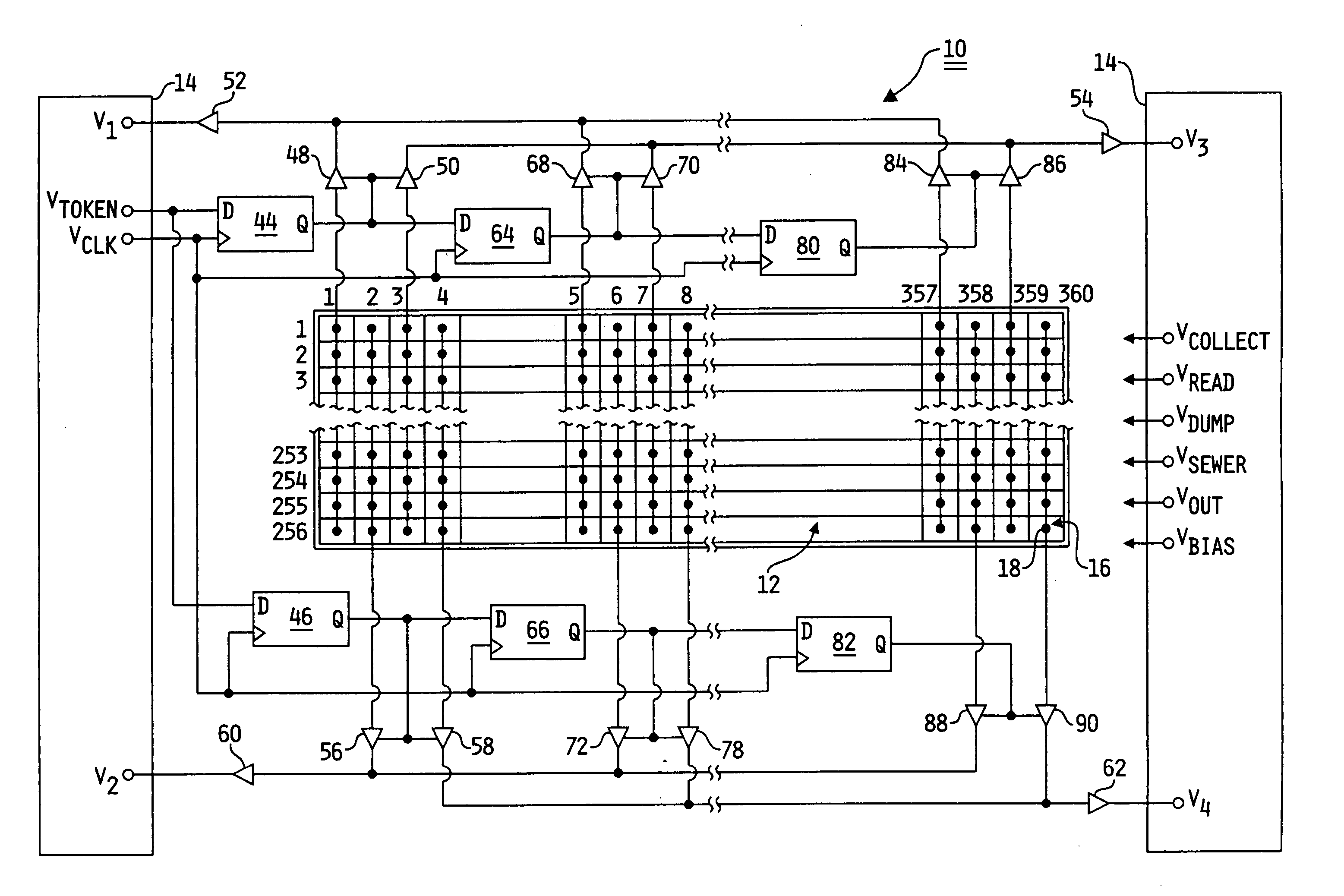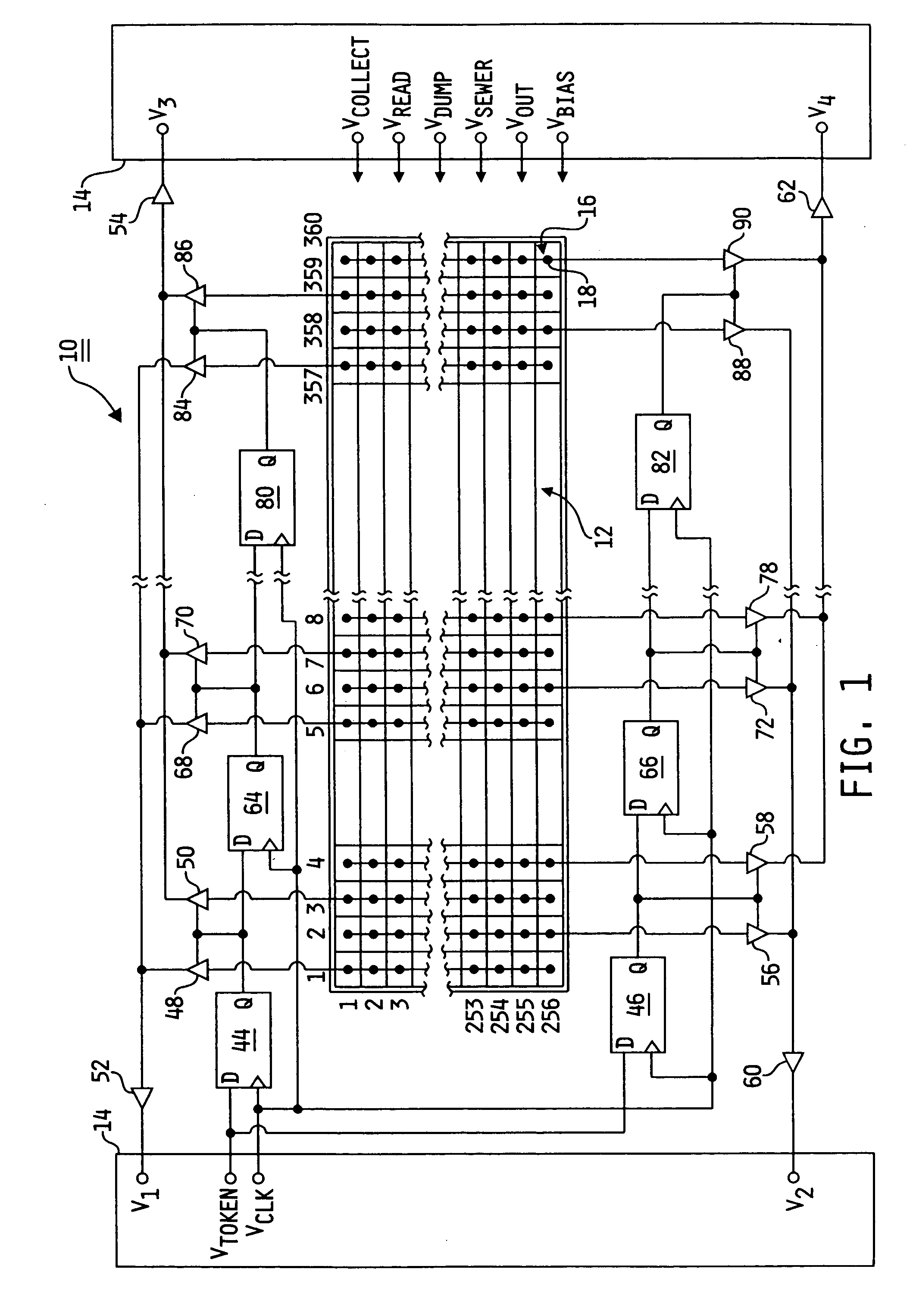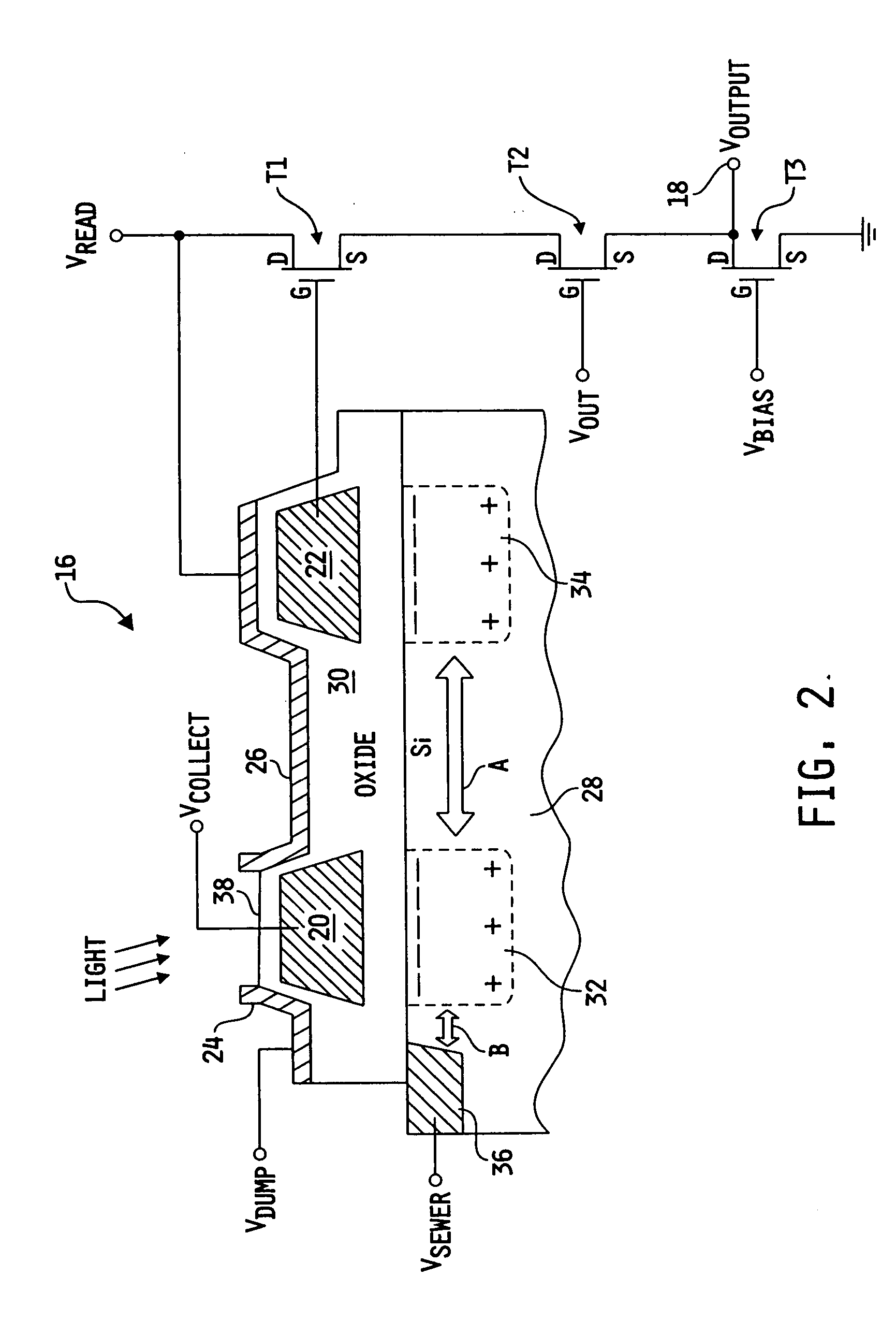Self testing CMOS imager chip
a self-testing, imager chip technology, applied in the field of photosensitive imagers, can solve the problems of insufficient monitoring of imager operation, insufficient detection of in-field failures or changes in imager performance, so as to reduce the noise of fixed pattern, eliminate the need for expensive light injection and measurement test equipment, and enhance the operation of the imager
- Summary
- Abstract
- Description
- Claims
- Application Information
AI Technical Summary
Benefits of technology
Problems solved by technology
Method used
Image
Examples
Embodiment Construction
[0012] The embodiments of the invention described herein are not intended to be exhaustive or to limit the invention to the precise forms disclosed. Rather, the embodiments selected for description have been chosen to enable one skilled in the art to practice the invention.
[0013] Referring now to FIG. 1, imager 10 generally includes a pixel array 12, a controller 14 for inputting control signals to pixel array 12 and receiving output signals from the read-out electronics (the remaining electronics shown in FIG. 1). Pixel array 12 is arranged in 226 rows of 360 pixels 16 each. Each pixel 16 includes an output node 18. As shown in FIG. 1, the output nodes 18 of pixels 16 in each of the 360 columns are connected together and to the read-out electronics as will be further described below. It should be understood that the size of array 12 (i.e., the number of rows and columns) is irrelevant in terms of implementing the teachings of the present invention.
[0014]FIG. 2 is a cross-sectiona...
PUM
 Login to View More
Login to View More Abstract
Description
Claims
Application Information
 Login to View More
Login to View More - R&D
- Intellectual Property
- Life Sciences
- Materials
- Tech Scout
- Unparalleled Data Quality
- Higher Quality Content
- 60% Fewer Hallucinations
Browse by: Latest US Patents, China's latest patents, Technical Efficacy Thesaurus, Application Domain, Technology Topic, Popular Technical Reports.
© 2025 PatSnap. All rights reserved.Legal|Privacy policy|Modern Slavery Act Transparency Statement|Sitemap|About US| Contact US: help@patsnap.com



